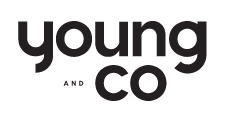Most business owners understand the dreaded feeling of running payroll when cash flow is tight. What you might not realize, however, is that overhiring and underperforming are the two things that contribute the most to your cash flow issues.
There is a light at the end of the tunnel – one that doesn’t leave you worried about having enough cash to pay your team and still make a profit.
In this post, we’re sharing how to increase your profitability by optimizing team performance based on our work with dozens of 7 figure clients as experienced CFO advisors. Whether you’re trying to onboard more help without going over your spending limits or you don’t know what you can afford to pay your team at your current revenue, read on for some of our team best practices.
Evaluating Your Team To Ensure Profitable Growth
If your business is growing, your initial thought might be, “I need more help!”
Before you run to upload a “We’re hiring!” post on LinkedIn, though, you need to figure out if taking on a new team member is the best decision for your business – both for profit and overall improvement.
You’ll first need to audit and analyze your current team’s performance to figure out where time and energy are being spent and how it’s currently reflected in your payroll and profit.
Three things typically come into play when we help to evaluate your team:
1. Understand Capacity and Utilization
When you hire a full-time team member, you want to hire them with the intention of utilizing them at a high-volume percentage.
What we often see with clients is that when an employee is underutilized – meaning you’re paying them for full-time work but they’re only using 50% of their time (or less!) for client work – there is a profitability issue. This means that the company is not bringing in enough revenue to fully utilize the team member, let alone, cover their salary.
One of the best ways to understand your team’s utilization and capacity is to track their time. You can have them use a program, such as Toggl, to clock their time as they work on tasks. This tool will not only give you an overall percentage of how their time is being utilized but will also allow you to have a real-time pulse on hours tracked at any point in the month. In general, you shouldn’t expect a team member to be 100 percent utilized on client work due to needing to take care of administrative tasks and take time off, but they should ideally be at least 70 to 80 percent utilized in client work.
From there, use the data to compare how much team members cost relative to the revenue generated. With this data in hand, you can decide whether or not you have enough cash flow to support another team member or if you should readjust how the current team is being utilized.
2. Set a Revenue Target
Knowing where and how your team is working will create clarity for setting goals that drive higher profits to your business. One of the most important goals you need to set is your revenue target, which is how much revenue you need to bring in during any given period to cover all your cash outflows, including expenses, your owner pay, taxes, profits and savings or debt payments.
Most business owners set their revenue target at whatever the next big milestone is, but we don’t find this method for goal-setting to be helpful because it isn’t tied to any meaningful metrics. It’s helpful to take a bottom-up approach to goal setting to make sure that you know how much you need to bring in to have enough cash flow, in addition to setting your big picture vision for your business.
Set the goal you want to achieve over the next quarter or year. Then compare this goal to your current performance to determine whether you’re on track and to see how much money you need to bring in with the team you currently have to pay each member and still hit your revenue target.
3. Create a Financial Plan to Achieve Your Goals
As a business owner, it’s easy to just set a revenue goal. You can look at what you’re making now and say, “Great, I need to make XYZ next.” But when it comes to creating a plan around that goal, it’s not always as simple, and we frequently see business owners not hitting their revenue targets because they don’t have a cohesive plan in place to make it happen.
There are many other factors to consider in your financial plan, like:
When and how to raise your prices to ensure your offers are profitable
What to pay each of your team members
How much you truly need to generate in sales to make a profit
How you plan to hit your revenue target with the team and capacity you currently have
When and who to hire if you need additional support
Having an overall financial plan helps to dictate your business and team structure, so you have a better sense of capacity and a clear understanding of the work that is needed to move you towards hitting your revenue target – and beyond.
With our CFO services, we’ll help you assess your profitability and build a financial plan for your business so you have a clear path toward profitability and wealth creation.
You can also check out our free Profit Assessment tool to get an idea of how you can improve your business’s profitability and cash flow!
